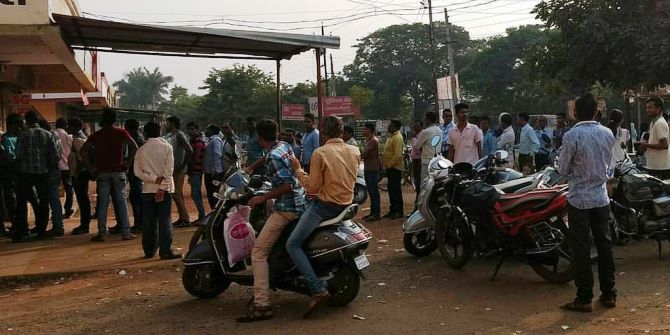Praveen Priyadarshi observes how the nature of urban development in one city encapsulates India’s future woes and aspirations.
Geographical proximity to Delhi might be the main reason why Gurgaon has grown phenomenally in recent decades. The city is nothing like Delhi either in terms of landscape and skyline, or in terms of overall urban character. If walking the lanes of Delhi is like time travel as you enter and exit developments from different eras, walking in Gurgaon (availability of pavements permitting, which is rare) is an escape from the historicity of Indian urban spaces. While Delhi provides a window into the continuity and ruptures in the development of contemporary India, Gurgaon is a peephole into its future aspirations. And if an image seen through a peephole is to be believed, Indian aspirations appear to be premised on the idea that in order to create a better future, one must erase the past.
So the high-rise apartment buildings that define Gurgaon’s skyline have not just outnumbered small village settlements, but have completely engulfed them. Farmers, who until recently enjoyed a leisurely agrarian life, find themselves numerically overwhelmed by white-collar, middle-class professionals. Farm land has given way to commercial complexes in which young urban Indians seek and find jobs, and shopping malls where they shop and entertain themselves.
The signboards and hoardings erected by real estate developers further obliterate the city’s history. Those in charge of naming urban development and real estate projects take their inspiration from global cities, but never from the names the site was known by historically— what used to be Wazirabad village now lies near Hong Kong market. The city itself has been divided into more than one hundred sectors, each of which is known by a numeric, so Wazirabad village itself is Sector 56, Sector 57 and so on. If Indian mega-cities such as Mumbai and Kolkata have changed their names to undo the colonial legacy and reclaim the indigenous, Gurgaon appears to be on an opposite path—renaming is a way to snap the place’s links with the indigenous and the past.
But then, the story of Gurgaon is not an ordinary story. Neither is it the story of a city organically coming to life, nor is it a story of planned urban development. Gurgaon materialised when the Indian economy opened up in the early 1990s and multinational and foreign corporations sought national offices in close proximity to the political nerve centre. Delhi was already saturated in terms of area and population and had a well-developed urban civic culture. Gurgaon thus began to emerge as an operations hub.
The Y2K scare at the turn of the millennium also spurred the city’s growth. The need to update global software infrastructure created a market for computer professionals that the northern hemisphere could not fulfill. Western software companies therefore began recruiting computer programmers in India. For these long-distance employees, who came to be known as BPO (business processes outsourcing) workers, Gurgaon offered the perfect working environment—multinational offices on the outskirts of Delhi with easy access to an international airport.
Sadly, this accidental city is also very accident-prone. According to the city traffic police data, 11 people are killed on average on the city’s roads each week. Pedestrians and cyclists are the most common victims and cars and heavy vehicles are the worst perpetrators. This divide between victims and perpetrators echoes the great class divide in Gurgaon. It is as unlikely that the white-collared and rich will walk the city’s streets as it is for the poor to traverse Gurgaon by car. This is because Gurgaon has two types of public spaces: ‘public-public spaces’ and ‘private-public spaces’. The former comprise the unsafe and often potholed roads where classes mix, but end up colliding on unequal terms, and often with fatal consequences. The latter are shopping malls and golf courses—climate-controlled, manicured, and maintained by private companies for the exclusive use of those who can pay.
Gurgaon, which has emerged as a showpiece of the Indian knowledge economy, takes its name from a famous teacher featured in the epic Mahabharata. Legend has it that Guru Dronacharya, who taught archery to the royals, was gifted this village by the king; hence the name ‘guru gaon’ (village of the teacher). But this nomenclature is ironic, rather than apt. Although Gurgaon hosts the knowledge economy, it has not emerged as a centre of knowledge. None of the numerous institutions of higher education that the government has planned is in Gurgaon. In contrast, several ambitious educational initiatives have been taken both by the government and the private sector in Bangalore, the other poster-city of the knowledge economy. Perhaps for this reason Gurgaon will continue having a lot to learn about urbanity and modernity in contemporary India.
Praveen Priyadarshi is a PhD candidate at LSE’s Department of International Development.









Praveen, these are timely and useful reflections, and many more such reflections on Gurgaon are so essential, especially regarding the fact that this is a private city- a forerunner among the many that are currently springing up in various parts and in many different formats. I wish you had expanded more on that aspect.
Thank you, Jayaraj. I agree, we generally need a lot more political economy and political sociology of changes taking place in the Indian cities.